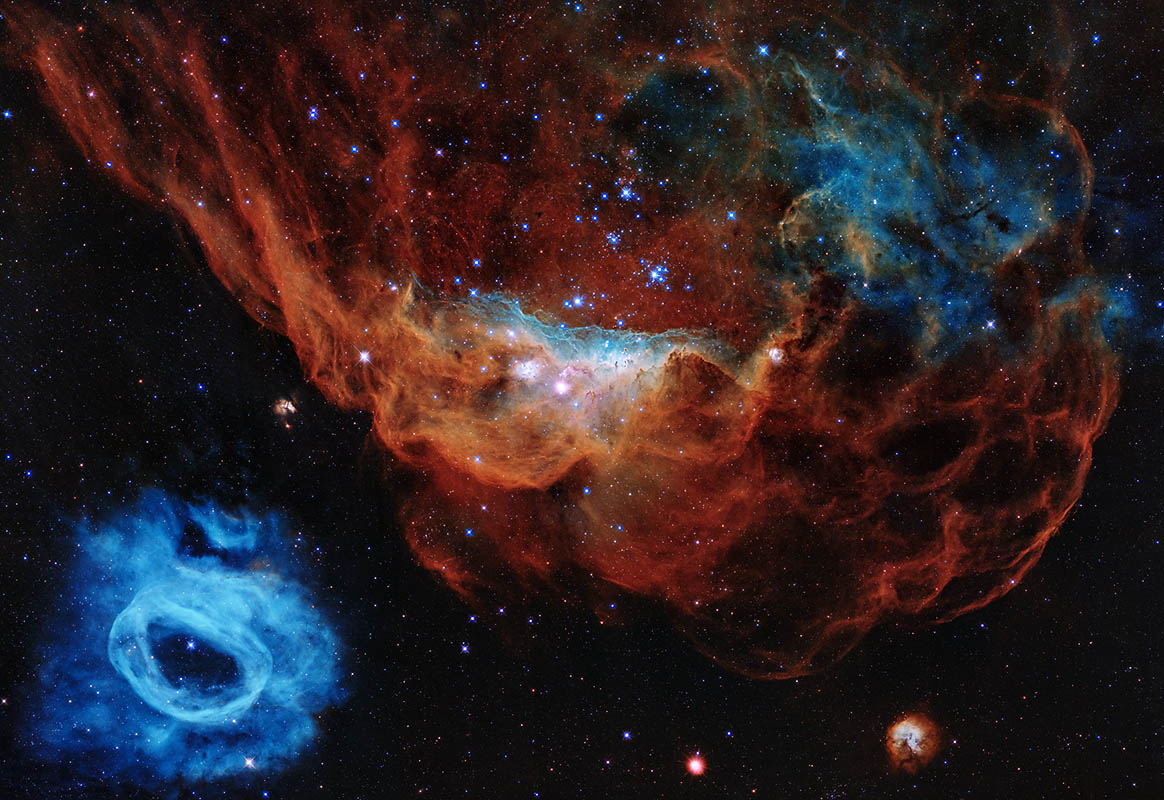A colorful image resembling a cosmic version of an undersea world teeming with stars is being released to commemorate the Hubble Space Telescope’s 30 years of viewing the wonders of space. In the Hubble portrait, the giant red nebula (NGC 2014) and its smaller blue neighbor (NGC 2020) are part of a vast star-forming region in the Large Magellanic Cloud, a satellite galaxy of the Milky Way, located 163,000 light-years away. (NASA, ESA and STScI)
Home A colorful image resembling a cosmic version of an undersea world teeming with stars is being released to commemorate the Hubble Space Telescope’s 30 years of viewing the wonders of space. In the Hubble portrait, the giant red nebula (NGC 2014) and its smaller blue neighbor (NGC 2020) are part of a vast star-forming region in the Large Magellanic Cloud, a satellite galaxy of the Milky Way, located 163,000 light-years away. (NASA, ESA and STScI) A colorful image resembling a cosmic version of an undersea world teeming with stars is being released to commemorate the Hubble Space Telescope's 30 years of viewing the wonders of space. In the Hubble portrait, the giant red nebula (NGC 2014) and its smaller blue neighbor (NGC 2020) are part of a vast star-forming region in the Large Magellanic Cloud, a satellite galaxy of the Milky Way, located 163,000 light-years away. (NASA, ESA and STScI)
A colorful image resembling a cosmic version of an undersea world teeming with stars is being released to commemorate the Hubble Space Telescope’s 30 years of viewing the wonders of space. In the Hubble portrait, the giant red nebula (NGC 2014) and its smaller blue neighbor (NGC 2020) are part of a vast star-forming region in the Large Magellanic Cloud, a satellite galaxy of the Milky Way, located 163,000 light-years away. (NASA, ESA and STScI)


